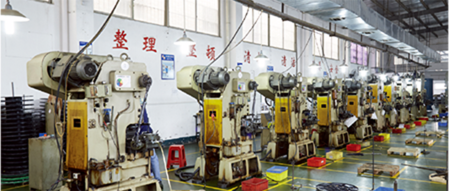Application, Manufacturing and Maintenance of Stamping Dies
As an indispensable tool in modern manufacturing, the quality and design of stamping dies directly affect the quality of products and production efficiency. As a tool specifically used for metal stamping processing, stamping dies can process metal sheets into desired shapes and sizes through methods like stamping, shearing, and forming. As one of the professional stamping die manufacturers, ORIENSON's stamping dies have been widely used and recognized in industries such as automotive, household appliances, electronics, and aerospace.
Types and Applications of Stamping Dies
Stamping dies can be categorized into various types based on their functions and uses, each with specific application scenarios:
Simple Die: Used for single-step stamping operations, such as punching and shearing. Suitable for simple shapes and low-volume production.
Compound Die: Integrates multiple stamping processes in one die, completing several operations in one go to improve production efficiency.
Progressive Die: Suitable for mass production. The material gradually passes through a series of dies, each completing part of the process.
Transfer Die: Uses mechanical hands or other transfer mechanisms to move the material from one station to the next, achieving multi-process continuous stamping and improving the degree of automation.
Bending Die: Used to bend metal sheets into shapes such as U-bends and V-bends. Widely used in manufacturing various bent parts.
Drawing Die: Used to draw metal sheets into different shapes, creating various containers and covers, such as food cans and beverage cans.
Design Principles of Stamping Dies
The design of stamping dies is a complex and delicate process, requiring consideration of multiple factors to ensure the durability and production efficiency of the die:
Material Selection: The die material needs to have good hardness, wear resistance, and toughness. Common materials include high-speed steel, hard alloys, and tungsten steel. As one of the professional stamping die manufacturers, ORIENSON selects suitable materials based on the specific application scenario and customer requirements.
Structural Design: The structural design of the die needs to consider factors like stamping pressure, material flow, and product precision. Through reasonable structural design, the stability and durability of the die during stamping can be ensured.
Surface Treatment: The working surface of the die typically needs heat treatment and surface hardening to improve wear resistance and adhesion resistance. This helps to extend the die's lifespan and improve production efficiency.
Guiding and Positioning: The die needs precise guiding and positioning mechanisms to ensure the correct position of the material during stamping, which helps to guarantee the product's precision and consistency.
Springs and Air Cushions: Used for the fast opening and closing of the die and the smooth ejection of the product after stamping. The design and use of these auxiliary components are also crucial for improving production efficiency.
Manufacturing Process of Stamping Dies
The manufacturing of stamping dies is a complex and delicate process, including several steps such as design, processing, assembly, debugging, and maintenance:
Design Stage: Use computer-aided design (CAD) software to create a three-dimensional model of the die and perform simulation analysis to ensure the feasibility and efficiency of the design. This is the first and crucial step in manufacturing stamping dies.
Material Selection: Choose suitable die materials based on the die's purpose, the nature of the stamping materials, the stamping speed, and the expected lifespan of the die. As one of professional stamping die manufacturers, ORIENSON provides a variety of material choices to meet different needs.
Manufacturing Process: Includes steps like cutting and pre-processing, CNC machining, EDM, wire cutting, heat treatment, and surface treatment. Each step requires precise control and high-quality processing equipment to ensure the die's precision and durability.
Assembly and Debugging: After the parts of the die are processed, precise assembly and debugging are needed. This is a crucial step to ensure that the die works correctly in actual stamping.
Die Testing and Optimization: After assembly and debugging, the die is tested to check its performance and whether the produced products meet the design requirements. If issues are found, ORIENSON will adjust and optimize the die to ensure it meets customer expectations and needs.
Maintenance and Care: Stamping dies need regular maintenance and care during use to maintain their optimal performance. ORIENSON provides professional maintenance and care services to ensure the long-term stable operation of the dies.
As an indispensable tool in modern manufacturing, the application, manufacturing, and maintenance of stamping dies are complex and delicate processes. As one of the professional stamping die manufacturers, ORIENSON is committed to providing high-quality stamping dies and professional services to meet customer needs and expectations.

 English
English 





